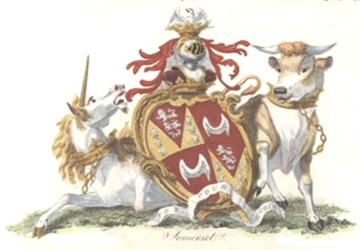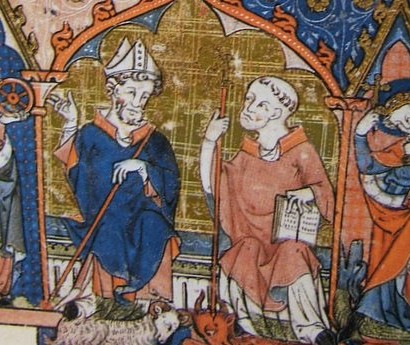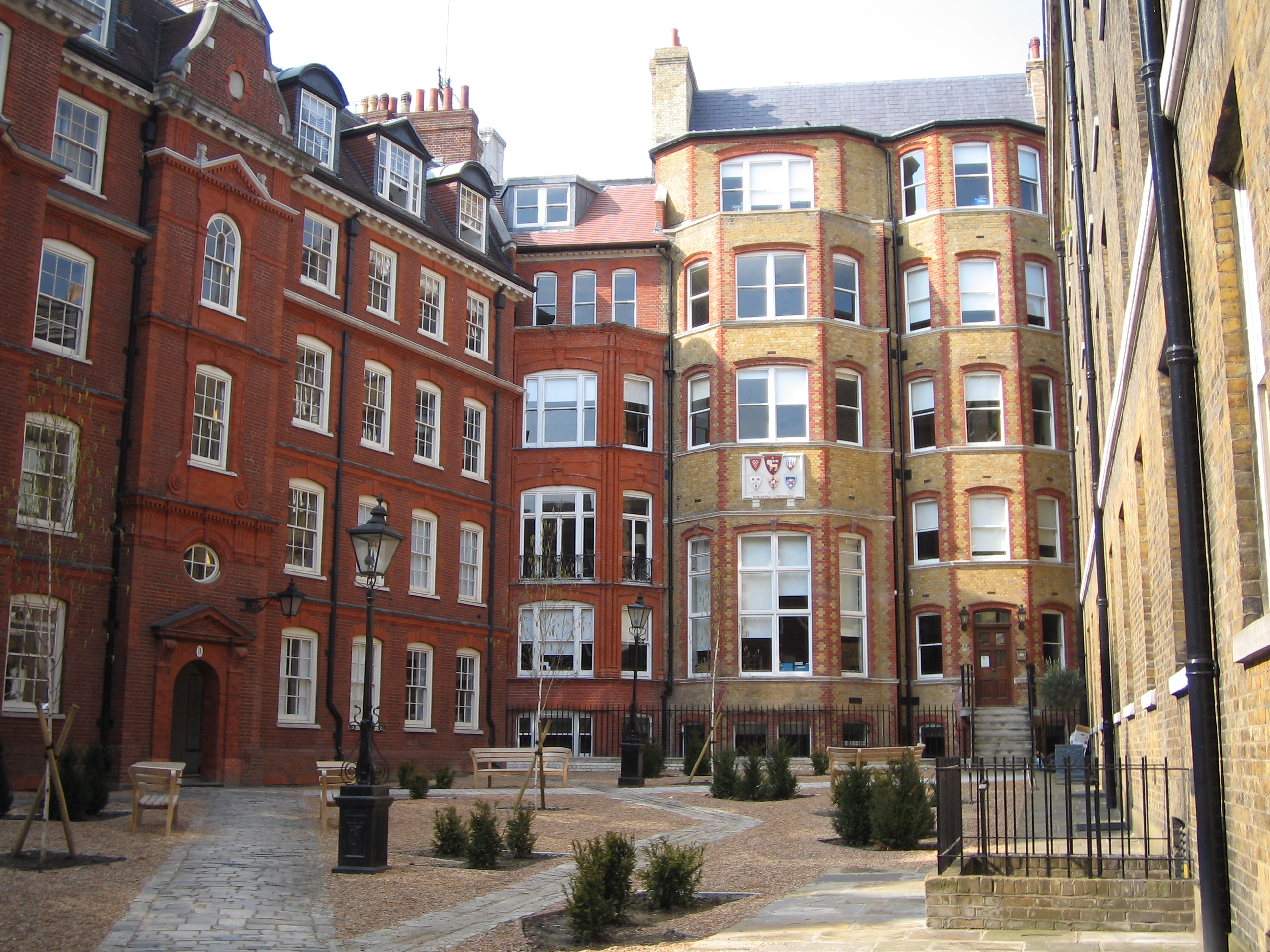|
Edmond Ludlow
Edmund Ludlow (c. 1617–1692) was an English parliamentarian, best known for his involvement in the execution of Charles I, and for his ''Memoirs'', which were published posthumously in a rewritten form and which have become a major source for historians of the Wars of the Three Kingdoms. Ludlow was elected a Member of the Long Parliament and served in the Parliamentary armies during the English Civil Wars. After the establishment of the Commonwealth in 1649 he was made second-in-command of Parliament's forces in Ireland, before breaking with Oliver Cromwell over the establishment of the Protectorate. After the Restoration Ludlow went into exile in Switzerland, where he spent much of the rest of his life. Ludlow himself spelled his name Ludlowe. Early life Ludlow was born in Maiden Bradley, Wiltshire, the son of Sir Henry Ludlow of Maiden Bradley and his wife, Elizabeth, daughter of Richard Phelips of Montacute, Somerset. He matriculated at Trinity College, Oxford in Septem ... [...More Info...] [...Related Items...] OR: [Wikipedia] [Google] [Baidu] |
Maiden Bradley
Maiden Bradley is a village in south-west Wiltshire, England, about south-west of Warminster and bordering the county of Somerset. The B3092 road between Frome and Mere forms the village street. Bradley House, the seat of the Duke of Somerset, is adjacent to the village. Maiden Bradley is the principal settlement in the civil parish of Maiden Bradley with Yarnfield. The parish is in the Cranborne Chase and West Wiltshire Downs Area of Outstanding Natural Beauty and was one of the clearings in the former Selwood Forest. In the north-west the parish includes the hamlet of Gare Hill, but most dwellings there are in Trudoxhill parish, Somerset. Geography Great Bradley Wood and Little Bradley Wood form a large woodland which spans the Somerset border here and occupies a large western tranche of Maiden Bradley parish. It occupies, at between 180m and 104m AOD, the slopes down from the rolling plateau on which the village and its fields lie, which is between 180 and 240 metres AOD. ... [...More Info...] [...Related Items...] OR: [Wikipedia] [Google] [Baidu] |
Oliver Cromwell
Oliver Cromwell (25 April 15993 September 1658) was an English politician and military officer who is widely regarded as one of the most important statesmen in English history. He came to prominence during the 1639 to 1651 Wars of the Three Kingdoms, first as a senior commander in the Parliamentarian army and then as a politician. A leading advocate of the execution of Charles I in January 1649, which led to the establishment of the Republican Commonwealth of England, Scotland and Ireland, he ruled as Lord Protector from December 1653 until his death in September 1658. Cromwell nevertheless remains a deeply controversial figure in both Britain and Ireland, due to his use of the military to first acquire, then retain political power, and the brutality of his 1649 Irish campaign. Educated at Sidney Sussex College, Cambridge, Cromwell was elected MP for Huntingdon in 1628, but the first 40 years of his life were undistinguished and at one point he contemplated emigration to ... [...More Info...] [...Related Items...] OR: [Wikipedia] [Google] [Baidu] |
Sir Arthur Hesilrige, 2nd Baronet
Sir Arthur Haselrig, 2nd Baronet (1601 – 7 January 1661) was a leader of the Parliamentary opposition to Charles I and one of the Five Members whose attempted arrest sparked the 1642–1646 First English Civil War. He held various military and political posts during the 1639–1651 Wars of the Three Kingdoms but became an opponent of Oliver Cromwell during the Protectorate. In 1660, his actions inadvertently helped restore Charles II to the throne; unlike many senior Parliamentary leaders, his life was spared but he was confined to the Tower of London, where he died on 7 January 1661. Life Haselrig was the eldest son of Sir Thomas Hesilrige, 1st Baronet (alternative spellings "Heselrig" and "Haselrigge"), of Noseley Hall, Noseley, Leicestershire, and of Frances Gorges, daughter of Sir William Gorges, of Alderton, Northamptonshire. From an early age he imbibed strong puritanical principles and showed a special antagonism towards Archbishop Laud. Short and Long Parlia ... [...More Info...] [...Related Items...] OR: [Wikipedia] [Google] [Baidu] |
Cavalier
The term Cavalier () was first used by Roundheads as a term of abuse for the wealthier royalist supporters of King Charles I and his son Charles II of England during the English Civil War, the Interregnum, and the Restoration (1642 – ). It was later adopted by the Royalists themselves. Although it referred originally to political and social attitudes and behaviour, of which clothing was a very small part, it has subsequently become strongly identified with the fashionable clothing of the court at the time. Prince Rupert, commander of much of Charles I's cavalry, is often considered to be an archetypal Cavalier. Etymology Cavalier derives from the same Latin root as the Italian word and the French word (as well as the Spanish word ), the Vulgar Latin word '' caballarius'', meaning 'horseman'. Shakespeare used the word ''cavaleros'' to describe an overbearing swashbuckler or swaggering gallant in Henry IV, Part 2 (c. 1596–1599), in which Robert Shallow says "I'll drink ... [...More Info...] [...Related Items...] OR: [Wikipedia] [Google] [Baidu] |
Wardour Castle
Wardour Castle is a ruined 14th-century castle at Wardour, on the boundaries of the civil parishes of Tisbury and Donhead St Andrew in the English county of Wiltshire, about west of Salisbury. The castle was built in the 1390s, came into the ownership of the Arundells in the 16th century and was rendered uninhabitable in 1643 and 1644 during the English Civil War. A Grade I listed building, it is managed by English Heritage and open to the public. History Construction and design In the 1300s, the land on which the castle was built was owned by the St Martin family until Sir Lawrence de St Martin died in 1385. Later in that year the land was acquired by John, the fifth Baron Lovell. In 1392 or 1393 Baron Lovell was granted permission by King Richard II to build a castle on the site. It was constructed using locally quarried Tisbury greensand, and the master mason was William Wynford. The design was inspired by the hexagonal (6-sided) castles then in fashion in par ... [...More Info...] [...Related Items...] OR: [Wikipedia] [Google] [Baidu] |
Edward Hungerford (Roundhead)
Sir Edward Hungerford (1596–1648) of Corsham, Wiltshire and of Farleigh Castle in Wiltshire (now Somerset), Member of Parliament, was a Parliamentarian commander during the English Civil War. He occupied and plundered Salisbury in 1643, and took Wardour and Farleigh castles.The Internet Archive: Lee, Sidney (1903), Dictionary of National Biographybr>Index and Epitome (also main DNB xxviii 254) Origins Hungerford was the eldest son of Sir Anthony Hungerford (1564–1627) of Black Bourton, by his first wife Lucy Hungerford, a daughter of Sir[...More Info...] [...Related Items...] OR: [Wikipedia] [Google] [Baidu] |
Battle Of Edgehill
The Battle of Edgehill (or Edge Hill) was a pitched battle of the First English Civil War. It was fought near Edge Hill and Kineton in southern Warwickshire on Sunday, 23 October 1642. All attempts at constitutional compromise between King Charles and Parliament broke down early in 1642. Both the King and Parliament raised large armies to gain their way by force of arms. In October, at his temporary base near Shrewsbury, the King decided to march to London in order to force a decisive confrontation with Parliament's main army, commanded by the Earl of Essex. Late on 22 October, both armies unexpectedly found the enemy to be close by. The next day, the Royalist army descended from Edge Hill to force battle. After the Parliamentarian artillery opened a cannonade, the Royalists attacked. Both armies consisted mostly of inexperienced and sometimes ill-equipped troops. Many men from both sides fled or fell out to loot enemy baggage, and neither army was able to gain a decisiv ... [...More Info...] [...Related Items...] OR: [Wikipedia] [Google] [Baidu] |
Worcester, England
Worcester ( ) is a cathedral city in Worcestershire, England, of which it is the county town. It is south-west of Birmingham, north-west of London, north of Gloucester and north-east of Hereford. The population was 103,872 in the 2021 Census. The River Severn flanks the western side of the city centre. It is overlooked by Worcester Cathedral. Worcester is the home of Royal Worcester, Royal Worcester Porcelain, composer Edward Elgar, Lea & Perrins, makers of traditional Worcestershire sauce, the University of Worcester, and ''Berrow's Worcester Journal'', claimed as the world's oldest newspaper. The Battle of Worcester in 1651 was the final battle of the English Civil War, during which Oliver Cromwell's New Model Army defeated Charles II of England, King Charles II's Cavalier, Royalists. History Early history The trade route past Worcester, later part of the Roman roads in Britain, Roman Ryknild Street, dates from Neolithic times. It commanded a ford crossing over the Rive ... [...More Info...] [...Related Items...] OR: [Wikipedia] [Google] [Baidu] |
Robert Devereux, 3rd Earl Of Essex
Robert Devereux, 3rd Earl of Essex, KB, PC (; 11 January 1591 – 14 September 1646) was an English Parliamentarian and soldier during the first half of the 17th century. With the start of the Civil War in 1642, he became the first Captain-General and Chief Commander of the Parliamentarian army, also known as the Roundheads. However, he was unable and unwilling to score a decisive blow against the Royalist army of King Charles I. He was eventually overshadowed by the ascendancy of Oliver Cromwell and Thomas Fairfax, and resigned his commission in 1646. Youth and personal life Robert Devereux was the son and heir of Robert Devereux, 2nd Earl of Essex, the courtier and soldier from the later reign of Queen Elizabeth I. His mother was Frances Walsingham (1567–1633), the only daughter of Sir Francis Walsingham, Elizabeth's spymaster. He was born at the home of his grandmother, Lady Walsingham, in Seething Lane, London. He was educated at Eton College and Merton College, ... [...More Info...] [...Related Items...] OR: [Wikipedia] [Google] [Baidu] |
Inner Temple
The Honourable Society of the Inner Temple, commonly known as the Inner Temple, is one of the four Inns of Court and is a professional associations for barristers and judges. To be called to the Bar and practise as a barrister in England and Wales, a person must belong to one of these Inns. It is located in the wider Temple area, near the Royal Courts of Justice, and within the City of London. The Inn is a professional body that provides legal training, selection, and regulation for members. It is ruled by a governing council called "Parliament", made up of the Masters of the Bench (or "Benchers"), and led by the Treasurer, who is elected to serve a one-year term. The Temple takes its name from the Knights Templar, who originally (until their abolition in 1312) leased the land to the Temple's inhabitants (Templars). The Inner Temple was a distinct society from at least 1388, although as with all the Inns of Court its precise date of founding is not known. After a disrupted early ... [...More Info...] [...Related Items...] OR: [Wikipedia] [Google] [Baidu] |
Trinity College, Oxford
(That which you wish to be secret, tell to nobody) , named_for = The Holy Trinity , established = , sister_college = Churchill College, Cambridge , president = Dame Hilary Boulding , location = Broad Street, Oxford OX1 3BH , coordinates = , location_map = Oxford (central) , undergraduates = 308 (2011/2012) , graduates = 125 , shield = , blazon = ''Per pale or and azure, on a chevron between three griffins' heads erased four fleurs-de-lis all counter-changed'' (arms of Sir Thomas Pope, Founder) , homepage = , boat_club Boat Club Trinity College (full name: The College of the Holy and Undivided Trinity in the University of Oxford, of the foundation of Sir Thomas Pope (Knight)) is one of the constituent colleges of the University of Oxford in England. The college was founded in 1555 by Sir Thomas Pope, on land previously occupied by Durham College, home to Benedictine monks from Durham Cathedral. Despite its large physical size, the college is relatively small ... [...More Info...] [...Related Items...] OR: [Wikipedia] [Google] [Baidu] |
Montacute
Montacute is a village and civil parishes in England, civil parish in Somerset, England, west of Yeovil. The village has a population of 831 (2011 census). The name Montacute is thought by some to derive from the Latin "Mons Acutus", referring to the conically acute St Michael's Hill dominating the village to the west. An alternative view is that it is named after Drogo de Montagu, whose family originated from Montaigu-les-Bois, in the arrondissement of Coutances. Mortain held Montacute after 1066, Drogo was a close associate. The village is built almost entirely of the local hamstone. From the 15th century until the beginning of the 20th century it formed the heart of the Estate (land), estate of the Phelips family of Montacute House. The village has a fine Middle Ages, medieval Church (building), church, and was the site of a Cluniac Reforms, Cluniac priory, the gatehouse of which is now a private house. At the centre of the village is a large Town square, square known as t ... [...More Info...] [...Related Items...] OR: [Wikipedia] [Google] [Baidu] |







